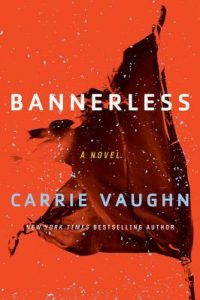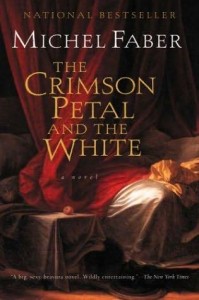
 Title: Bannerless by Carrie Vaughn
Title: Bannerless by Carrie Vaughn Series: Bannerless Saga #1
Published by Mariner Books
Published: July 11th 2017
Genres: Science Fiction, Mystery
Pages: 352
Format: eBook
Source: Netgalley
Goodreads
What happens when you mix a post-apocalyptic dystopian with a bit of detective fiction? You’ll get Carrie Vaughn’s Bannerless. I really enjoy traditional, structural genre stories mixed with a fantastic setting, and this one didn’t disappoint. Bannerless takes place about a hundred years after a series of events destroy society. It’s a little like taking a peek into our future if we aren’t careful about our relationships with other countries and if we aren’t careful with our planet. Instead of being another post-apocalyptic dystopian novel, Vaughn uses this vision of the future as a twist in her traditional mystery and that twist adds a dimension to the story that I found really enjoyable.A mysterious murder in a dystopian future leads a novice investigator to question what she’s learned about the foundation of her population-controlled society.
Decades after economic and environmental collapse destroys much of civilization in the United States, the Coast Road region isn’t just surviving but thriving by some accounts, building something new on the ruins of what came before. A culture of population control has developed in which people, organized into households, must earn the children they bear by proving they can take care of them and are awarded symbolic banners to demonstrate this privilege. In the meantime, birth control is mandatory. Enid of Haven is an Investigator, called on to mediate disputes and examine transgressions against the community. She’s young for the job and hasn't yet handled a serious case. Now, though, a suspicious death requires her attention. The victim was an outcast, but might someone have taken dislike a step further and murdered him? In a world defined by the disasters that happened a century before, the past is always present. But this investigation may reveal the cracks in Enid’s world and make her question what she really stands for.
In this futuristic world, the population has dwindled, birth control is mandatory, and people live in tight-knit communities in which everyone knows everyone else’s business. People group together in family units called houses, and they work together to provide enough materials for themselves and for their families, and once their quotas are met or consistently exceeded, these families can apply to get a banner which allows that household to have a baby.
Enid of Haven is an Investigator, a role that combines the roles of police, detective, and judge. Crime doesn’t really exist in this future world, and most of it ends up being bannerless pregnancies or unauthorized food and material production to try to game the system. She is called up with her partner to investigate a suspicious death of a bannerless person in a neighboring community, and she is forced to confront someone with her past as she and her partner Tomas figure out the mystery. I also really enjoyed Enid’s self-discovery as she investigates the suspicious death. She goes from being a little insecure of herself as an individual to growing more and more confident in herself, and to me, that’s entirely relatable. Told in alternating chapters of Enid’s past and present, Bannerless explores a future in which our very society is regulated on the local level and how our actions, even with good intentions, can be devastating for entire families.
If you enjoy traditional mysteries, dystopian futures as imagined in books like Station Eleven, and speculative fiction, you’ll probably enjoy this one! It’s short, yet well-crafted and well-paced. And I’ve just read she’s working on another post-apocalyptic murder mystery, so I’m hoping that the next one will continue following Enid’s investigations!
This book was provided to me for review by Netgalley and Mariner Books. All opinions are my own.


 Title:
Title: